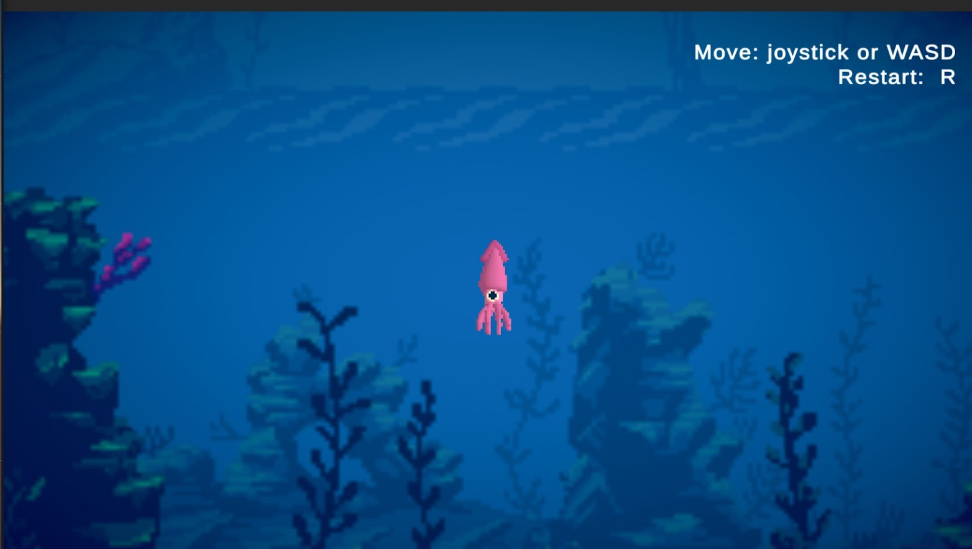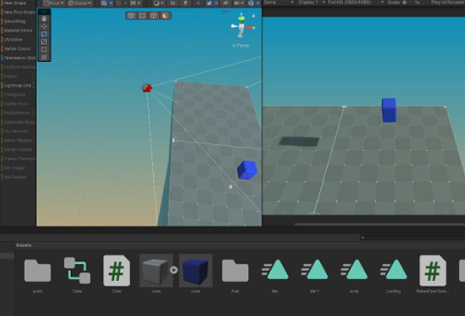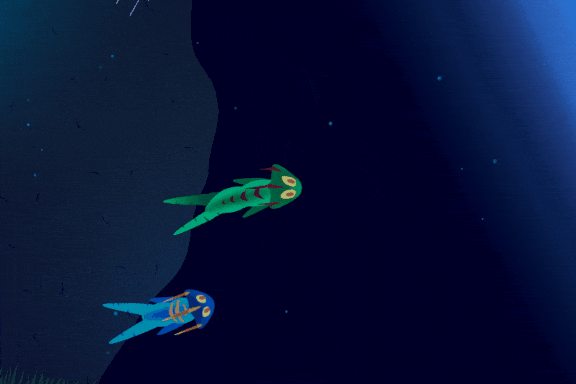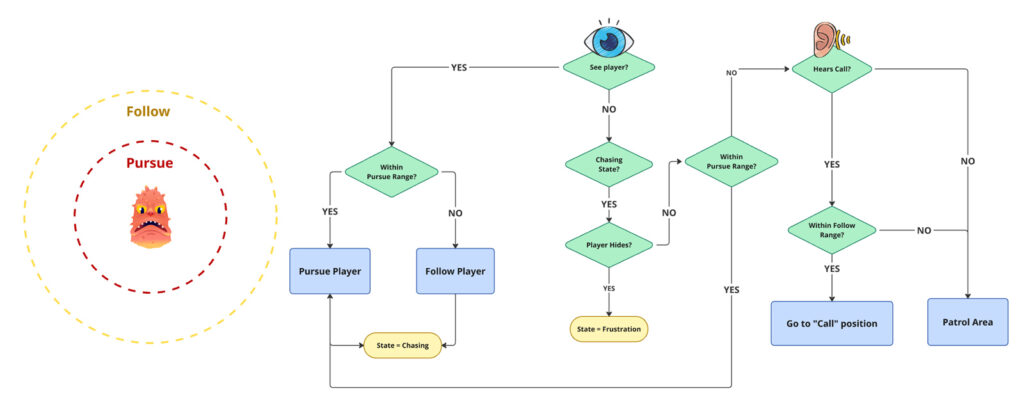Challenges and goals
- Embrace a minimalist design: one core mechanic enabling multiple contextual actions
- Convey a full narrative arc without dialogue or voiceover
- Teach gameplay solely through systems, level design, and environmental cues
- Build responsive and engaging enemy AI that supports a stealth-based gameplay loop
- Deliver a strong sense of vulnerability and tension through game feel and pacing
Contributions
- Designed and developed core gameplay mechanics and systems
- Crafted narrative through environmental storytelling
- Led audio and music direction in collaboration with the team
- Implemented enemy AI behaviors and logic
- Polished game feel through VFX, lighting, and animation tuning
- Built a programmable cinematic system for in-game storytelling
- Coordinated and analyzed insights from 20+ player playtests
The Design Process
Ideation: Visit to CSC
After experimenting with a few mechanic-based prototypes, my teammate and I visited the California Science Center for inspiration. Observing strange sea creatures turned out to be exactly what we needed. I became fascinated by organisms with reactive, tentacle-like filaments—they sparked the idea of capturing a living, surreal underwater ecosystem that is in constant movement by the use of procedural 2D animation.

Preproduction: experimenting with goals and constraints
First couple of weeks experimenting. I built movement-focused prototypes and experiments to convey character emotions without dialogue. A trip to the California Science Center and procedural animation prototypes inspired our alien underwater world setting, also leading to our key design constraint: no dialogue, minimal text.
Every single prototype tried to answer a design question:


Minimalist stealth gameplay
Aiming for accessibility and simplicity, I focused on movement and a single versatile mechanic, a “call” mechanic. Inspired by games like Super Meat Boy, our character remains unchanged, you get no power ups or anything like that, is the situations that change. Playtesting proved to very extremely important to get the movement just right so that players feel as a fast but fragile underwater creature.

Using the “Call” to communicate with your friend

Using “Call” to get the monster’s attention

Using “Call” to open gates
Designing AI enemies
I designed and developed the AI system for our procedurally animated monsters using Behavior Designer in Unity and callbacks to a custom script to manage states. The main idea was to mimic sight and sound perception– so they react if they see or hear you.
Over time, the AI evolved to make the monsters feel more alive. For example, I added a “frustration” state—if the player hides while being chased, the monster will wander near the hiding spot, still looking for them.




